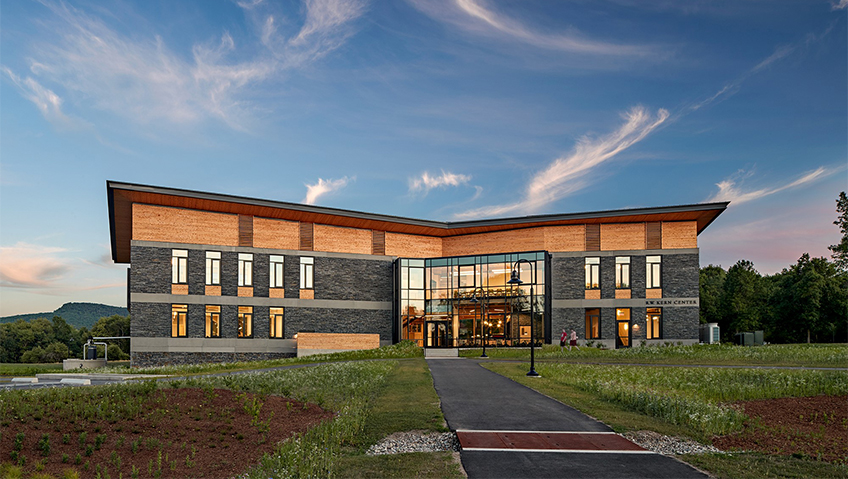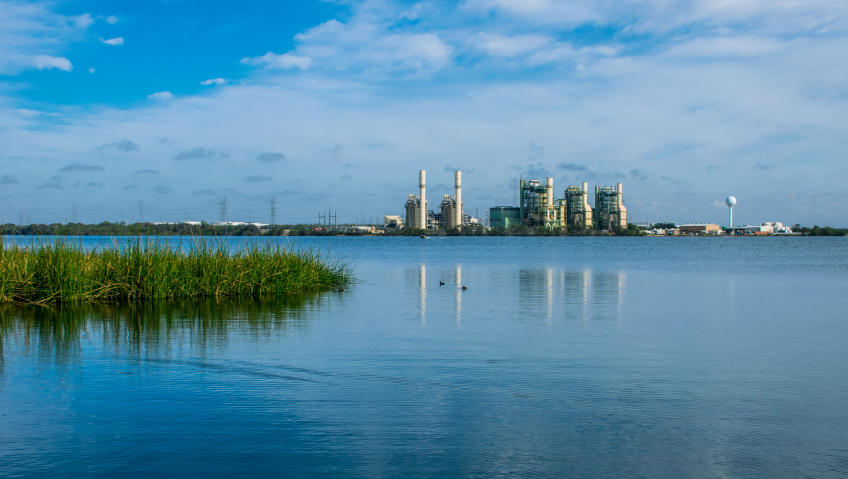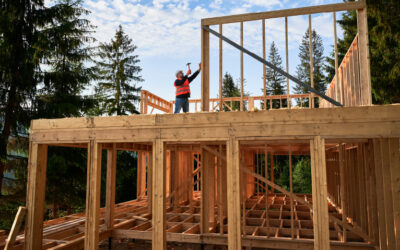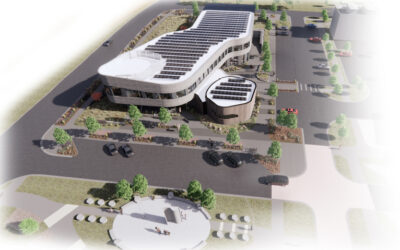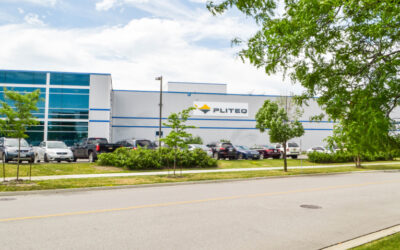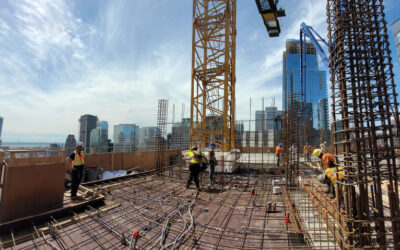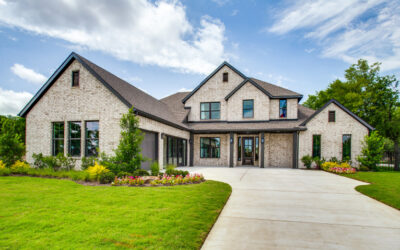Jonathan Wright doesn’t follow traditional paths. The founder of Wright Builders, Inc., one of the leading construction firms in Western Massachusetts for 50 years, Wright was a member of the first graduating class at Hampshire College in 1969 and found himself searching for his way in the world.
“They were tumultuous times and there was a strong instinct of wanting to be home somewhere,” says Wright. That ended up being Northampton, right across the river from Hampshire College. Growing up and later on, Jonathan developed his interests and skills in carpentry as well as repairing boats and making furniture.
“My story is about hiring and working with people who know more than I do. If you think you’re the smartest person in the room, you’re not that smart. I’m a kind of restless guy. I don’t rely on conventions.”
Doing good, doing well
Northampton, just on the cusp of its rejuvenation after the 1960s, was good to Wright. “There was an underlying notion that it was possible to be a progressive employer and that doing well by staff and others working in the business was a way to do good, and doing good was a path to doing well.”
Being a progressive employer included providing fully paid company health insurance, life insurance, paid maternity leave, and adoption leave—policies to make life possible.
The business was initially a combination of building and woodworking—joint passions of Wright’s—resulting in a new woodworking facility in 1977, the first solar-heated industrial facility in New England, with systems designed by Total Environmental Energy. And while the company strove to create something unique and avoided getting drawn into building “McMansions,” at times there has been “enormous” competitive pressure, says Wright, including at least two serious recessions.
“That’s part of the history too, surviving those things, but some remarkably skilled people have kept me company over the years as time went on,” says Wright, specifically of Mark Ledwell, who joined the company as Executive Vice President in 2000, after 15 years as a general contractor in the Valley. “Mark was a remarkable craftsman and brilliant man who had previously worked as an installer for us from his own business,” says Wright.
Unfortunately, about five years ago Mark’s health began to fail and when he took ill, Seth Lawrence-Slavas, now President, bought Mark’s shares shortly before he passed away.
“It was a huge loss for the region,” says Wright of Ledwell, who was dedicated to the company’s goals of quality design and construction as well as sustainable design, including Living Buildings designed to improve the symbiotic relationships between people and all aspects of the built and natural environments.
RW Kern Center
For Wright Builders, such buildings have included the RW Kern Center at Hampshire College, where the company has been involved since its inception, and the Hitchcock Center for the Environment in Amherst.
“The RW Kern Center is a really powerful project,” says Lawrence-Slavas. “When we talk about some of the LEED neighborhoods we do, that’s the underlying ethos of the company that naturally follows those pathways.”
These projects, as meaningful as they are, are just an extension of where the company’s mindset is anyway, he adds. “We’re teachers in a lot of ways, and students in others. I think that’s a really basic way of saying what we do every day because it’s much more complicated than that. But that’s the reality of it.”
Although the Kern Center project was hampered by a late fall start and challenging weather conditions, the company’s dedication remained steadfast. “There was a moment when the project superintendent realized that his mind went from focusing on how difficult it was to how beautiful it was going to be,” says Wright. “When the workforce gets to do something meaningful, they’ll sense they’re working on something that’s not going to poison their children. You can’t overestimate the value of that. Whether it’s recognized in the moment or not, it does create a different sense of mission.”
This sense of mission attracts like-minded people to the company, such as Lawrence-Slavas, a star graduate student from UMass Amherst in the Building Construction Technology program both BS and MS, who actually studied the Kern Center while earning his undergraduate degree.
“There are so many ways to wash sustainability in the building industry, especially, and I think my upbringing was one of true living-off-the-land type of sustainability,” he says. “We didn’t have running water at my house; I didn’t have indoor plumbing in the early years of my life, and no electricity. For me, it wasn’t bizarre or this all-encompassing way of thinking about holistically living in your environment, it was just what I was given. That’s the way I lived. I didn’t have an option.”
When he saw the institutional, commercial-size Kern Center, he saw a building existing in that same realm, except it was comfortable. Instead of burning fossil fuel for light, there was solar power and grid back with battery emergency power backups.
Taking and giving back
“It’s going back to that very basic sense of living with your environment and what you’re taking, you’re giving back to it,” says Lawrence-Slavas. “It really is a zero sum, and hopefully a positive sum, that you’re increasing the environmental awareness and work that goes into it. That’s what made me get interested.”
Ultimately, the interest in buildings that didn’t require steel frames, plastics, and poisonous environmental elements pushed him toward this position, he says. “It was understanding that you actually can build things in this environment without killing people and without killing natural resources and do it in a way that’s dutiful to the place you live. I think the most meaningful part of all of that was understanding Jonathan’s mindset. He’s a good businessman, but at the end of the day, there’s so much more to this company than keeping the lights on.”
A high level of accountability is another important aspect of Wright’s leadership, says Lawrence-Slavas, and the constant push against what’s happening in the general world of construction. “There are people who come in here, and they’re life-long industry people, and they aren’t thinking about these things. And that doesn’t fit with our culture here. Sometimes they pick up the thread and its meaningful; sometimes they move on.”
“One of the things we’ve all struggled with is that everybody’s a climate activist until it comes to the pocketbook,” adds Wright.
It’s possible, they believe, to design a building that’s more efficient in its use of space so it can be smaller than a poorly designed building—and simpler does not mean ugly. Good and inspired design is built in; it’s in the form, and it’s in the spirit of the place.
A sense of place
“Seth and I are big fans of exposed structure,” says Wright. “We really do interact with everything around us based on how it’s made and not just what we see. When we see a building made out of material that we know to be regional and by hands known to us, it becomes a place that’s related to us. Creating a sense of place is one of the key ingredients to fighting loneliness and disaffection and all sorts of things that plague us.”
Striving to embrace sustainability and net zero principles in design and construction is all-encompassing and forces you to think differently about what you’re designing and building, adds Lawrence-Slavas.
“The energy actually is the easy part. [The trickier part is] the material sciences and the way the interactions happen between the occupants and the [natural environment] and fresh air and light,” he says. “There’s something about going through a checklist and getting a building certified that makes human brains think about what they’re going through. It’s not just mindless.”
When operating under LEED principles, for instance, everybody’s forced to think about it: the design team, subcontractors, material vendors, and construction managers, right from the start. “Code compliance is a minimum standard, and we should always be learning more than that, and pressing for more than that. That’s where the certifications really come into play.”
As house or apartment dwellers, we’ve largely become desensitized to how we live, in part due to a lack of education about how much better it could be. “A lot of people don’t have an understanding of the material aspects of what they’re putting in their house, even after [the builders are] long gone,” says Lawrence-Slavas. “Some of these processes and certifications are so encompassing. Living Building Challenge is absolutely the most encompassing of all of them; LEED and PHIUS are getting there and have been key instruments to policy and code mandates, which is an incredible power to possess.”
Education to this end includes information about VOCs (volatile organic compounds), PFAS (per- and polyfluorinated substances), and the plasticizers and flame retardants found in furnishings that, for the most part, no one thinks about. “That’s generational—the awareness of toxins and aspiring to better paths moves through to the children. That gets passed down to their children, and their children are healthy because of that, and before you know it, that’s just the way of life.”
Another aspect of certifications that means a lot to Wright Builders is that the people making many building products are from marginalized communities and continue to be, even with the amount of media attention and negative publicity aimed at massive polymer companies that have poisoned populations and killed employees. “That realization as a consumer—and we’re consumers at Wright Builders—and putting ourselves in that lens has been eye-opening, to say the least.”
The company builds a house or a commercial facility and maybe that process lasts anywhere from six to 18 months—but people are living and working in it for the rest of their lives, he adds. Shifting the focus from energy to a safe and healthy internal environment with good air and material quality is an additional step the company is taking.
Perspective change
“It’s been a real change in our perspective in the last 10 years,” says Lawrence-Slavas. “We’ve got the energy part down; we know how to build a great insulative envelope. Now it’s really about the materials and systems parts of the project.”
It’s just another reason why these certifications are so important: they encourage the project teams to look around and to think and to learn. “That’s game-changing. We’re at the point now with our subcontractors and vendors where they understand what we expect, and they bring that expectation to all their work, no matter if it’s with us or not,” he says. “I think that alone is a powerful catalyst of change.”
“Wright Builders is not in the business of creating obstacles to doing work, but of creating opportunities to thrive,” adds Wright. “It’s so important to get past “how hard this is” unless you first let me tell you what is most beautiful, what it is that gives us humans the potential to thrive and also the potential to self-destruct,” he says.
Looking forward, Wright adds, it’s not about how we’ve made life incredibly difficult for ourselves and still survived, but the things Seth is working on now: galvanizing customers, gathering interest, creating a reputation and a sense of the future associated with Wright Builders that generates work, profitability, and jobs. “Everything Seth is working on can become the standards of our industry if we are patient and persistent,” he believes.
As for Lawrence-Slavas, he foresees the company continuing to be innovators in the communities they’re living in. “The biggest nut we have to crack at this point is how we give this to people who are being harmed the most by the building cycle.”
Whether it’s the River Valley Co-Op the company helped and then built to be North America’s first net zero grocery store, or the six projects at Northampton State Hospital, each with their own LEED certifications, Wright Builders will continue to create more than just structures.
“I don’t think we would survive if we didn’t have passion,” says Lawrence-Slavas. “Some of this work is really hard. It’s trying and sometimes it chews people up and it spits them out, but it’s much bigger than us. We’re not just building these buildings to make sure people have housing to live in, but that they can actually thrive in them, grow in them, and be stewards of resilient buildings just by living their daily lives.”

